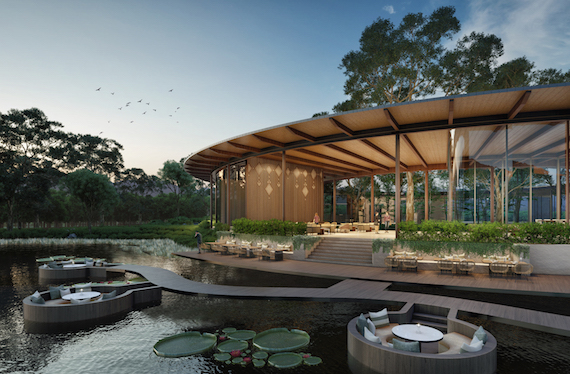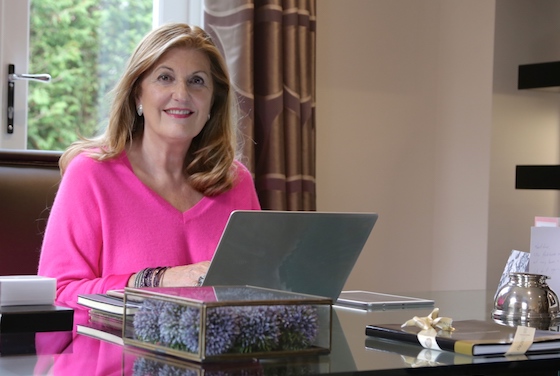Sue Harmsworth, MBE, one of the foremost authorities on spa and wellness, founded global brand ESPA in 1993 and sold it in 2017. Over her 45 years in the industry, she has designed more than 500 spas in 65 countries and created visionary wellbeing programs. Today, she advises owners, private equity firms and industry charities about concepts for wellness and medical destinations, aesthetics and skincare standards.
Among her current projects are Tri Vananda, opening in 2022 in Thailand, for Montara Group, the developers of the Trisara spa. She is also on the advisory board for Amaala, the destination opening in phases through 2028 in Saudi Arabia that includes an integrative medicine resort. Harmsworth shares her insights on how spas can rebound from COVID-19 and discusses the future of holistic holidays that aim to heal body, mind and spirit.
Contributed by Alicia Sheber

HOTELS: How can spas encourage guests’ trust?
Sue Harmsworth: Spas are a high-risk environment. For wellness destinations or clinics with medical elements, the standards for hygiene, sterilization, client care, etc., will be higher than anybody else’s because they need to comply given the nature of what they’re doing. But the hospitality industry is pretty good at self-regulating its spas. It’s going to be interesting as we move more into wellness, because deeper levels of expertise will bring another dimension to spas… (including) nutritionists, osteopaths, acupuncturists, holistic therapists, and so on… Although there will be a cost because their salaries are very high, they’ll bring an extra level of knowledge to spas and wellness centers. Most of the projects I’m designing now have strong medical aspects, so they must have very, very high standards right across the board for everything.
Training is one of the biggest challenges that hotel spas will face when addressing wellness and issues brought about by COVID. It’s an essential investment… New therapists need to be trained in empathy, emotional intelligence, and understanding guest interactions, especially at the top end of the market where expectations are so high. Now, a whole new level of service needs to be added with separation between guests and spaces, private sterilization rooms, turnaround times increasing, and the design of treatment rooms. It’s all going to change, and hotels really need to invest in it before they open again. They need to provide training for SOPs, protocols, and health and safety – plus every government and every licensing area will have different rules and regulations to comply with. It’s a bit of a minefield.

H: If you were opening a spa or wellness center now, what would you focus on?
SH: The biggest issue is sharing. How much are people going to want to share spaces? Are changing rooms going to be relevant and will people want to share them or use lockers? Or do we need more privacy with individual cubicles? Do we need to look at every treatment room having its own toilet and shower like spas in Asia? Are we going to need more rooms because some of them have to be left empty after a very intensive treatment?
At ESPA, we were always very strong on the mechanical and electrical side of air intake and exchange in treatment rooms. However, a lot of places aren’t built like that, and their treatment rooms share equipment such as air and cooling systems. Well, I just don’t think that’s acceptable. Each treatment room has to have its own completely self-contained air system. A treatment room has to be sterilized between appointments anyway, but there may be times when after three hours of back-to-back sessions, it needs to be left empty for an hour to completely refresh the air and make sure everything’s clear.
Grooming is the other thing that’s coming back strongly. It took a sideline for a while, but brows and proper mani-pedis are resurging. When you talk about resorts and hotels, you can’t be all things to people. Things are a little bit different with wellness destinations. For spas to succeed they have to know their clients and really know their market before making a move. People who are on top of that will succeed. You often find the marketing department dreams up all this stuff and it’s not really what people want. It’s great for marketing, but it isn’t actually what they want.
The sorts of things I’m talking about now and advise on for Amaala’s board are way ahead of the current market. I’m not really very involved in the design details like I was before. Most of the concepts we’re looking at now integrate spa, beauty, wellness, medical and mindfulness into a very holistic approach. I don’t want to say “holistic” in the popular sense of the word, as in hands-on treatments. I mean holistic: looking at the whole person. Going back almost to mind, body and spirit. We now know the power of the mind and the power of the microbiome. We know how the microbiome affects your brain, your skin, and all these things, so we’re addressing them all in one environment and the same person often needs things at different times.
H: How can spas and wellness centers return to profitability?
Before you do anything, you need to look at your hygiene processes. You need to look at how many people you can accommodate, and the types of people, and then you need to tailor your treatment menu to be as profitable as possible because you can only carry out a smaller number of services during the initial six months while gaining people’s trust to return. You’re going to have to do pre-arrival procedures and make sure everybody’s tested and OK. The possible number of people has to be scaled according to the size of your facility. You’ll need to figure out how long it will take to turn your treatment rooms around and if you’ll need to leave some of them empty. Decide if you need to space out your mani-pedi areas and how many people you can get in there.
Then work out your most profitable and popular treatments and keep them profitable because you’re going to lose money on turnaround time and that you don’t have as many people coming through. Some treatments that could be safely implemented into a new focused menu of services are sauna; clothed therapies like Thai massage; acupressure; hyperbaric chambers; water therapies; and solo circuits rather than shared circuits through the different spa zones.
The other piece that is going to be big and has been absolutely flourishing in lockdown is online sales, which historically hasn’t been good for the spa and wellness industry. Spas should be building communication with their clients and guests anyway, and attracting customer loyalty and trust is connected to online sales. Research the wellness market, not just for products but supplements, tools, all sorts of things you can offer and really get your online sales sorted, because it’s a huge opportunity and people who have now done all their purchasing online aren’t going to change.
Once you’ve got a client and know their routines and what products they need, the aim is to really boost that side, which is really important. The USA is better than the rest of the world in this aspect, but even so, there’s a big opportunity worldwide for sales and continuing sales afterwards, after somebody has left the spa. Guest loyalty and guest repeat business are going to be really important.
